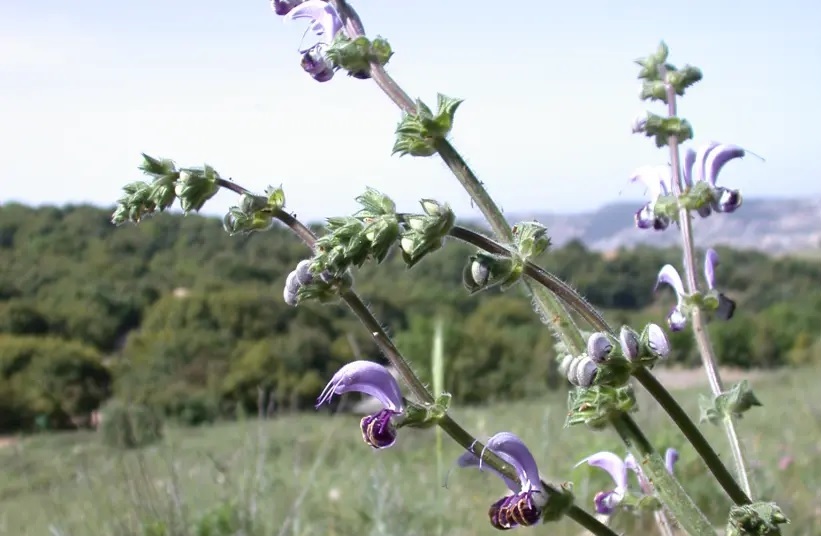
In December a tour of garden centers will reveal swaths of bright poinsettias and other colorful houseplants to celebrate Christmas. However, surveying all these plants, predominantly red in color, led me to wonder whether other holidays celebrated in December also have flowers or plants associated with them.
Hanukkah is the eight-day Jewish Festival of Rededication and falls very close to Christmas. It starts on the 25th day of the Hebrew month of Kislev, which is the anniversary of the beginning and end of the Jewish revolt against the oppressive rule of the Seculid king, Antiochius IV Epiphanes. In 165 BC, after exactly three years of fighting, the Jews succeeded in regaining the Temple in Jerusalem, which had been turned into a pagan shrine. They cleansed and rededicated the Temple in a celebration lasting eight days, like the Festival of Sukkot. Later on, Rabbinic tradition gave us the holiday’s other name, the Festival of Lights, as it was said that the Jews only found enough oil to light the Menorah in the Temple for one day, yet a miracle happened and this oil lasted for eight days until they were able to supply more pure oil.
A search regarding any flowers associated with the holiday, therefore didn’t initially reveal anything, after all the occasion commemorates a military victory, along with the miracle of oil lasting eight days. Generally, therefore, if any plants or flowers are bought for the holiday, they are flowers of white and blue, the colors of Israel’s flag as well as being traditionally important colors. However, further research turned up some interesting facts about the design of the original Menorah itself.
There is a description of the appearance of the original Menorah in Exodus, chapters 25:31-38 and 37:17-24. It states that Betzalel made the Menorah out of gold with six branches, three on each side. These branches are described as having calyxes, knobs and flowers, which as this terminology is botanical, suggests a plant was the inspiration for the Menorah’s appearance. Hannah and Ephraim Hareuveni, founders of the Museum of Biblical and Talmudic Botany at the first campus of the Hebrew University on Mount Scopus, researched this idea and found that various sage (salvia) plants growing in Israel and surrounding regions did indeed have a structure which is reflected in the design of the original Menorah.
There are several varieties of salvia native to the area. They include Salvia pomifera, apple or mountain sage, and Salvia fruticosa, Greek sage. Both plants are native to dry, poor soils around the eastern Mediterranean, and grow as sub-shrubs around 2-3 feet tall. Apple sage has pastel blue and white flowers, and Greek sage produces lavender pink flowers. While flowers and calyxes are terms that describe botanical parts, “knobs” does not immediately reference anything botanical. This is because it describes a type of gall frequently found on the stems of these plants, and Salvia pomifera in particular. Commonly referred to as Cretan apples, these galls were considered a delicacy in the region, and particularly Crete. The galls are created by a wasp, which lays its eggs in the stem of the plant, and the visible gall is the plant’s reaction to this. Thus, it would seem that inspiration for the appearance of the Menorah came from native sages.
Sadly, for New England residents, these sage plants are not hardy in our region. Our climate is too cold in winter and our soils, while generally not considered good by many a gardener, are also too wet in winter to support these plants. Neither is the wasp responsible for the galls to be found here either, but in Israel it is possible to see these plants growing naturally at Neot Kedumim, a 625-acre reserve created by Nogah Hareuveni with the purpose of recreating biblical landscapes so as to teach their deeper significance in text and tradition. There is even a Hill of the Menorahs, where various sage plants grow.
Today menorahs have eight branches and a central shamash, not only to reflect the miracle of lights, but also since the destruction of the Second Temple it is no longer permitted to make replicas of the seven branched Menorah.
In this winter season, an occasion to celebrate with friends and family is always welcome, and if like me, you love plants and flowers, holidays that incorporate them make them that bit more special. Happy holidays! May they be filled with plants and flowers!
Sources:
https://www.motherearthliving.com/gardening/An-Herbal-Menorah/
https://www.jpost.com/judaism/jewish-holidays/hanukkahs-botanical-link-to-israels-past-687020
https://depts.washington.edu/hortlib/pal/edible-galls-on-sage
https://www.myjewishlearning.com/article/hanukkah-101
https://www.kveller.com/5-surprising-facts-about-hanukkah-you-may-not-know
https://www.neot-kedumim.org.il/index-jewish-holidays/hannuka-festival-of-lights







